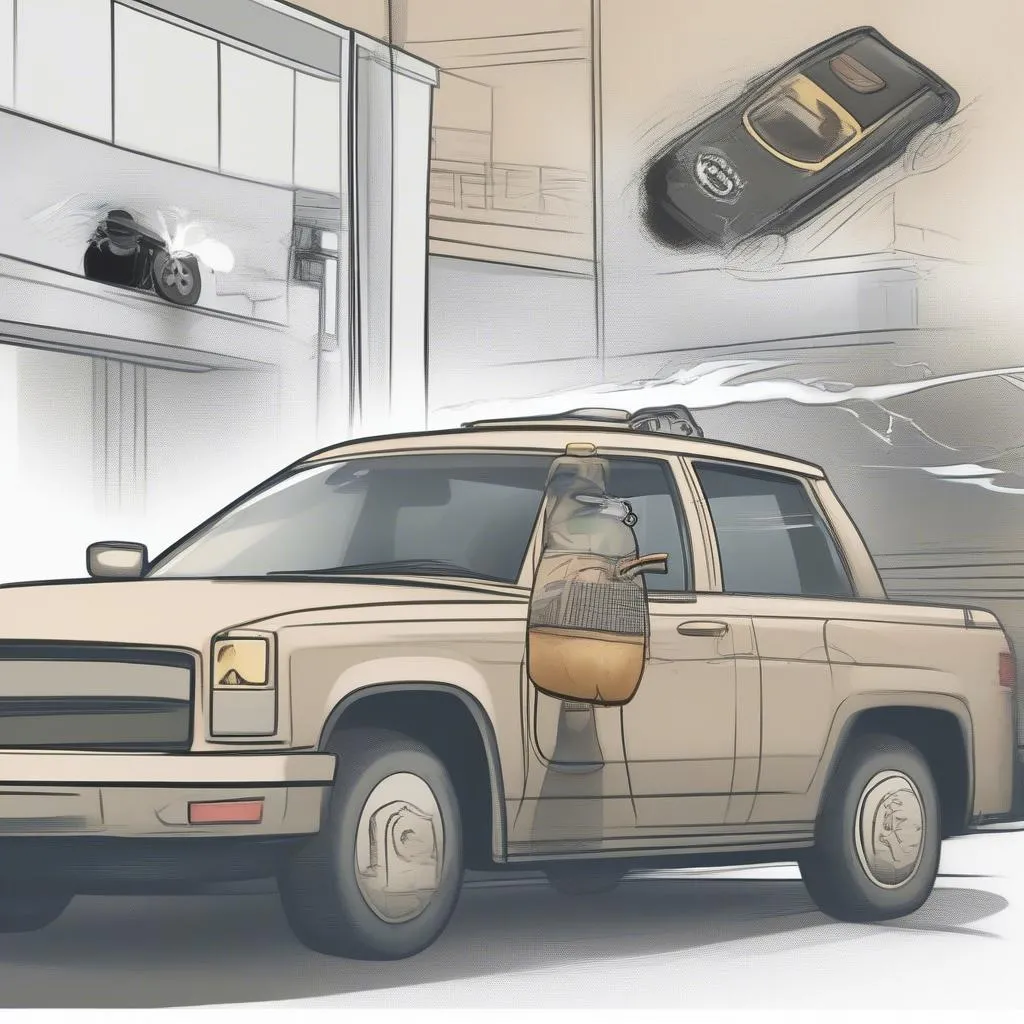The brake warning light on your 1993 Buick LeSabre is a crucial safety feature that shouldn’t be ignored. It signals potential problems within your braking system, and addressing them promptly is vital for your safety and the longevity of your vehicle.
While a glowing brake light can be alarming, it doesn’t always mean a complete brake failure is imminent. This article explores common causes behind a 1993 Buick LeSabre brake warning light and provides insights into diagnosing and addressing them.
Common Culprits Behind the Illuminated Warning
Several factors can trigger the brake warning light in your 1993 Buick LeSabre. Let’s delve into the most common culprits:
1. Low Brake Fluid Level
One of the most frequent reasons for the brake warning light to illuminate is a low brake fluid level. This usually indicates a leak in your braking system.
How to Check and Address:
- Park your LeSabre on level ground and turn off the engine.
- Locate the brake fluid reservoir. It’s typically a translucent plastic container on the driver’s side of the engine bay, marked with a cap labeled “Brake Fluid.”
- Visually inspect the fluid level. The reservoir should have minimum and maximum level markings.
- If the fluid level is low, add the appropriate DOT 3 or DOT 4 brake fluid recommended in your owner’s manual.
- If you need to add fluid frequently, it signifies a leak that requires immediate professional attention.
2. Worn Brake Pads
Brake pads are designed to wear down over time. When they reach a certain thinness, a sensor (if equipped) activates the brake warning light.
Addressing Worn Brake Pads:
Worn brake pads require immediate replacement to ensure optimal braking performance and prevent damage to the rotors. It’s best to have a qualified mechanic inspect and replace the pads.
3. Faulty Brake Light Switch
The brake light switch, located on the brake pedal arm, signals the brake lights to illuminate when you depress the pedal. A malfunctioning switch can disrupt this signal, leading to the brake warning light appearing on your dashboard.
Diagnosing a Faulty Brake Light Switch:
- Check if your brake lights are working. If they aren’t, it often points to a faulty brake light switch.
- Listen for unusual clicking sounds when pressing or releasing the brake pedal, which could indicate a failing switch.
4. ABS Issues (If Equipped)
If your 1993 Buick LeSabre has an Anti-lock Braking System (ABS), problems within the ABS module or wheel speed sensors can trigger the brake warning light.
Addressing ABS Problems:
Diagnosing ABS issues requires specialized equipment. If you suspect an ABS problem, it’s crucial to have your vehicle inspected by a qualified mechanic or a dealership.
When the Light Turns On: Next Steps
If your brake warning light illuminates, don’t panic. Here’s what to do:
- Safely pull over: Find a secure location to stop as soon as possible.
- Check the brake fluid: Refer to the steps mentioned earlier to inspect the brake fluid level.
- Visual inspection: If possible, briefly look for any visible signs of brake fluid leaks or damaged brake components.
- Seek professional help: If the brake fluid level is extremely low, you notice leaks, or suspect a more serious issue, do not attempt to drive further. Call a qualified mechanic or a towing service.
Expert Insight from John Miller, ASE Certified Master Technician: “Ignoring a brake warning light can lead to costly repairs and, more importantly, compromise your safety. Addressing brake issues promptly ensures optimal braking performance and peace of mind.”
Conclusion
The brake warning light on your 1993 Buick LeSabre is a safety feature that demands attention. By understanding the common causes and following the recommended steps, you can address the issue effectively and ensure your safety on the road. Always prioritize safety and seek professional assistance for any brake system concerns.

